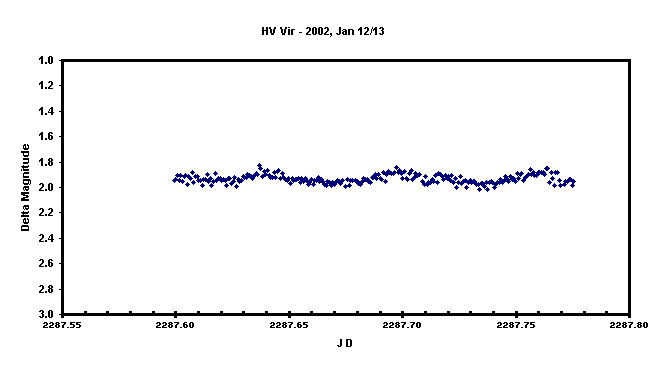 CBA
Belgium Observatory
CBA
Belgium ObservatoryRare outburst of HV Vir - Light curves
 CBA
Belgium Observatory
CBA
Belgium Observatory
Rare outburst of HV Vir - Light curves
| On January 4, 2002, Patrick Schmeer (Germany) announced his
visual detection of a rare outburst of the WZ Sge-type dwarf nova HV Vir.
The object was last seen in outburst in 1992, and the only known other
outbursts occurred in 1929 and 1970 (with maybe two additional faint
outbursts, one in 1939 and one in 1981). We refer to the VSNET
web page on HV Vir for a full account of the outburst history and for
further background information.
On this page, I present the HV Vir photometry results obtained at CBA Belgium Observatory. The light curve below was obtained on January 08/09, during a 4.4 hours run, using the 0.35-m f/6.3 SCT and ST-7 CCD (unfiltered) of CBA Belgium Observatory. Sky conditions were very good. The light curve shows genuine superhumps with an amplitude of 0.26 mag. Using the PDM technique, I obtained a superhump period of 0.0582 +/- 0.0001 d, which is in good agreement with intermediate results published by the VSNET Collaboration Team. It will be exciting to see how HV Vir's light curve and outburst behaviour evolves over the coming nights. |
|
|
| My next clear night was on January 12/13, 2002, when I managed to follow HV Vir's light modulations over a period of 4.2 hours, using the same equipment as described above. The resulting light curve is represented below, and shows already a significant amplitude change, compared to the January 08/09 data. The mean amplitude now was 0.14 mag. Another feature in the light curve is the weak appearance of secondary humps, superimposed on the genuine superhumps. |

|